Tina Farifteh participated in the International Talent Program for BredaPhoto Festival. Her photographs of innocent skies tell a gruesome story.
There they are. Impossible to miss. On supports measuring more than 8 metres wide and 3 metres high in one of the production buildings of the former Backer en Rueb machine manufacturing facility in Breda. The Killer Skies photographed by Tina Farifteh, a Dutch-Iranian photographer. Innocent skies with a gruesome theme. A story that needs to be told, in Tina’s opinion. ‘The objective of my exhibition at BredaPhoto Festival is to make people stop and think.’
Only a few years have passed since Tina Farifteh bought her first camera - for an overland trip to Mongolia. ‘My camera gives me a legitimate reason to unleash my curiosity’, she says. ‘To walk in somewhere and ask probing questions. Furthermore, my photos let me share my thoughts and concerns with others. Sharing knowledge is important to me.’
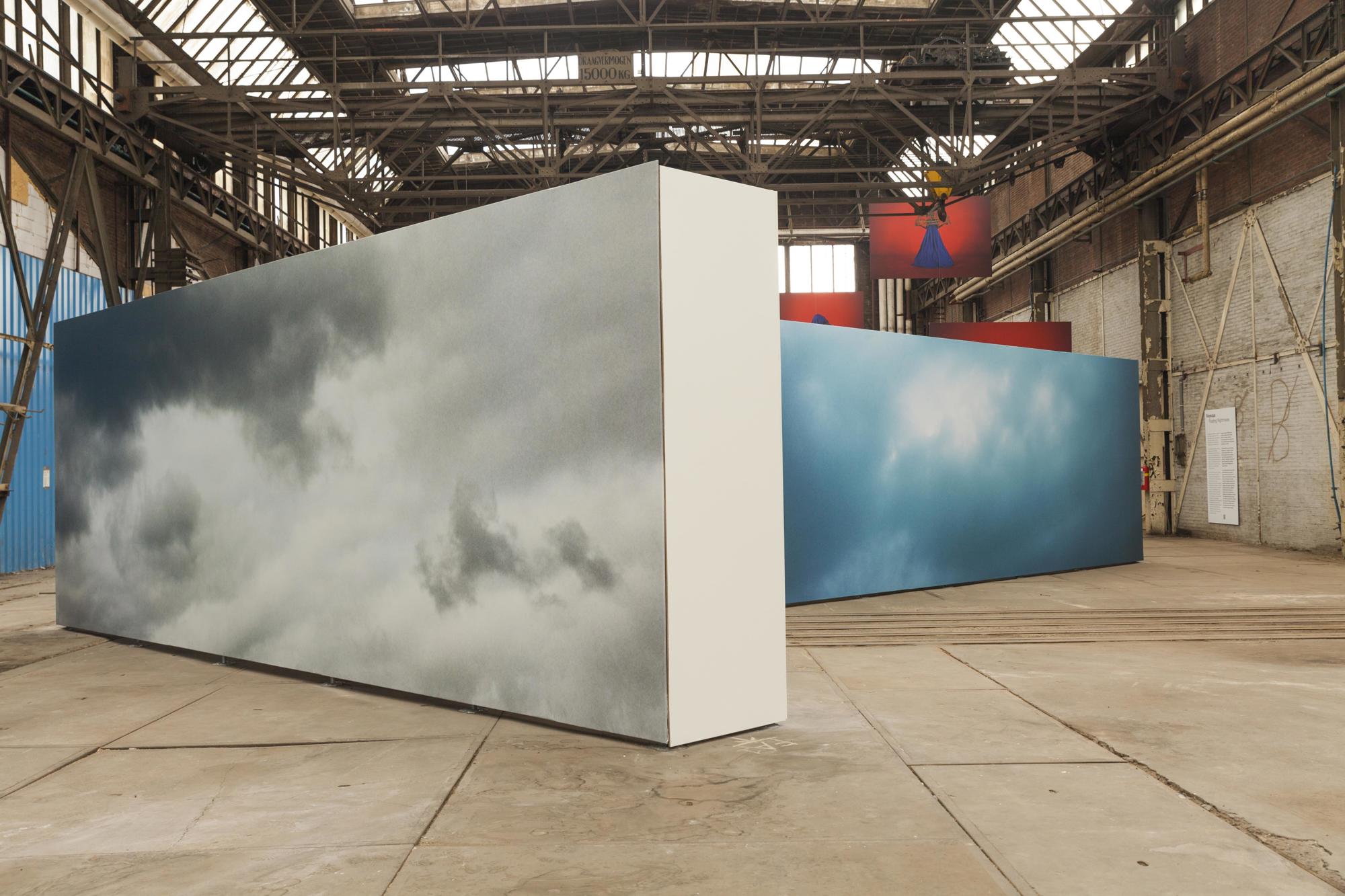
Taking pictures and doing background research: activities that are inseparably linked according to Tina. ‘My starting point is always a certain fascination or frustration.’ In the case of Killer Skies, it was the way in which her fellow travellers were using their mobile phones that caught her attention - on the train journey from her home city of Amsterdam to The Hague, where she studies at the Royal Academy of Art (KABK). ‘The fact that you are physically in one place, but your thoughts are somewhere else, and that what you do with your hands has an impact in a completely different place - that fascinated me. What does this mean in terms of how people interact? What does it mean for society?
At the time, she was still able to look up at the sky above Amsterdam or The Hague without a trace of fear, but that would soon change.
‘I start to observe how children behave when gaming by photographing their hands. I noticed that young children play pretty aggressive games in spite of their age. And as soon as they start shooting, their personality seems to change. The images of shooting children inspired her to look at the professionals. She watched videos of pilots in Apache combat helicopters and read about the soldiers who control weaponised drones.
When Tina delved into the American drone attacks on Afghanistan, she made a shocking discovery. ‘Even after seventeen years of this drone war, I found out that an attack is still launched every four days. And that drone attacks are also regular occurrences in other countries. That was something I didn’t know and when I asked my friends and family, they also appeared not to be aware of this. The US admits to these activities, but uncovering information about individual attacks is extremely difficult: when did an attack take place and how many casualties did it cause? That motivated me so much that I decided to focus on this theme.’
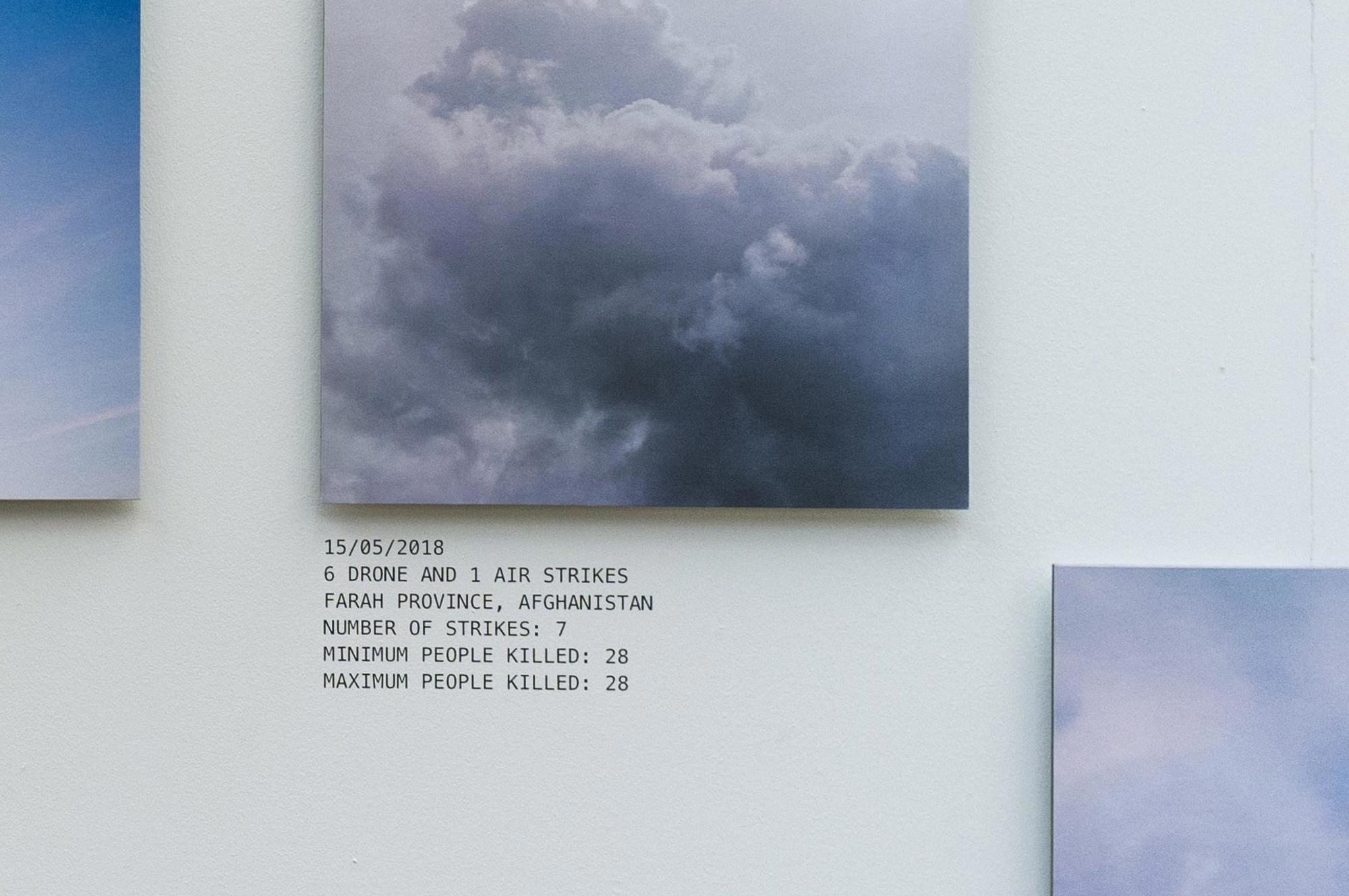
The start of this project coincided with the first round of introductory pitches for BredaPhoto Festival's International Talent Program, which is open to second-year students at the KABK (and students from seven other European academies). The theme of this eighth edition of the festival: To Infinity and Beyond - How does science affect our lives? Tina: ‘This was new to me and I wanted to find out how well I could pitch and how others would react to my work. And because my research matched the theme, I decided to register. I certainly didn’t expect to make it to the next round.’
Tina Farifteh was born in Iran. When she was thirteen she moved to the Netherlands. She remembers the war with Iraq, but only understood what was really going when she was older; she enjoyed a happy childhood in Tehran. One thing she learned as a young girl is that the world is much bigger than the town where you live. And that truth is a relative concept: ‘The stories told in my Iranian school books were completely different to the contents of my Dutch school books.’ What you understand to be the truth depends on your perspective, something that she is also very conscious of when taking pictures. Her work is often about the influence of political systems on ordinary people’s lives. But in many cases her starting point is personal: what feelings does this evoke?
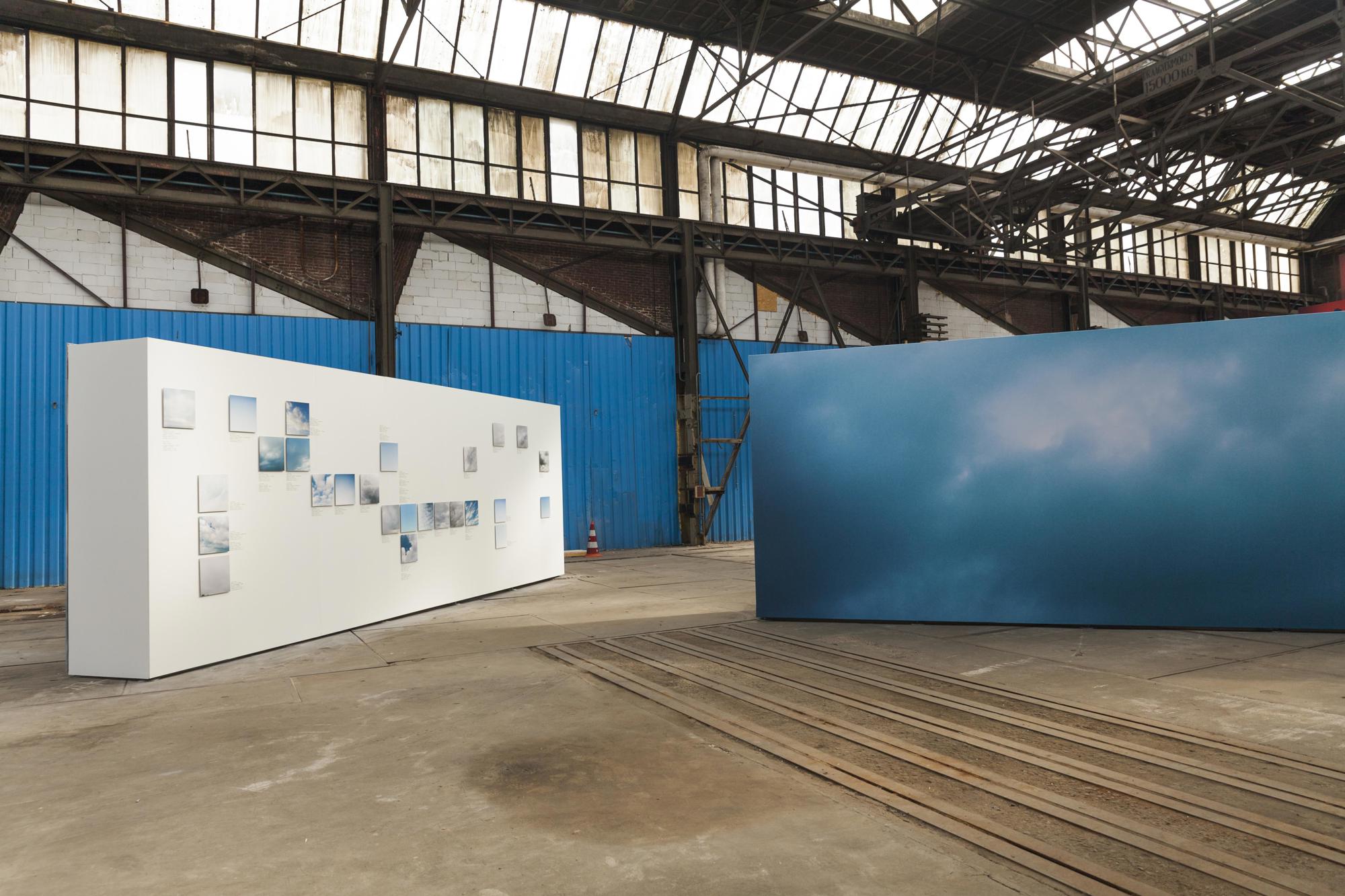
She laughs when she talks about her first pictures for her killer-drones project. ‘I wondered what I would do if I lived in one of those countries and knew that there would be an air strike every four days. I made a kind of camouflage suit and photographed myself in the studio. And I tried to hide my boyfriend in the forest. I presented those photos during my first pitch. Vague, analogue photos that you have to study closely to determine whether people are depicted.' What strikes me when she looks through the pictures she took is that each roll contains a few pictures of the sky. ‘Apparently I looked up at the sky quite often without really being aware of it, simply because I had the thought of an air strike at the back of my mind.’ In fact, one roll is completely dedicated to pictures of the sky - skies that look very beautiful, but at the same time very threatening. Tina decided to find out if a drone attack had taken place on the date when she took these pictures. As it turned out, there had been an attack in the province of Kunar in Afghanistan on 12 October 2017. Twenty people died.
From that day on, she has never looked at the sky without apprehension again.
These were the photos that Tina Farifteh presented for her second pitch for BredaPhoto Festival. She is eternally grateful to the curators of BredaPhoto Festival who courageously decided to let her go on to the third pitch round, which was to take place at the LUCA School of Arts in Brussels. ‘Because I didn’t yet have a fully completed project. Only the intention of photographing the sky every day and subsequently trying to find out whether air strikes had taken place on the same date. Not only to create a visual record of how often these strikes take place but also to make a connection with perfectly normal behaviour: looking up at the sky and enjoying what we see.’
It almost became a ritual for her. She took a picture of the sky every morning for a period of three months and subsequently searched through the databases of the London Bureau of Investigative Journalism to find out whether a drone attack had taken place somewhere in the world on each day. She noted the dates and the estimated death toll.

Together with forty-nine other students, she presented her work in Brussels in April this year. The work of only fifteen students was selected for the BredaPhoto Festival exhibition. Tina was one of them. ‘I felt grateful every time I was allowed to go through to the next round’, she says. ‘After all, each round was a new opportunity for me to tell my story to a different group of people.’ The fact that her work was chosen for the exhibition at the BredaPhoto Festival is ‘totally crazy’, as she puts it. ‘Because it means that I can touch the lives of even more people.’ Making people stop and think is what she wants to achieve with her Killer Skies. That is why the pictures depict skies rather than houses that have been shot to smithereens. ‘I don't want to tell people what to think. I want to encourage them to form their own opinions by asking critical questions: how do we feel about the fact that this is still happening, even though we hardly ever hear anything about these strikes? What does this technology mean for the future of warfare? Can you even classify unilateral strikes of this type as warfare?
Tina sent in her photos and dates to BredaPhoto Festival eight weeks before the opening day. But not before she had checked all the dates again. When she added up all the estimated casualties, she was once again shaken and shocked by the scale of this unilateral conflict. And she carried on taking photographs of the sky during the period that followed. Tina: ‘I really had to kick the habit. This was when I realised the impact that the project had had on me. I still can't ‘just’ look up at the sky.’
So a follow-up to this project is likely. ‘The theme I want to explore is what this type of knowledge does to you? I used to love sky scenes. That has changed now.’ The fact that the strikes continue, while the flow of information continues to lag behind, is bizarre in her opinion. ‘Moreover, I am curious to see how this technology and method of warfare will develop in the future.’
But let's talk about the BredaPhoto Festival first. Tina is 'enormously proud' and talks enthusiastically about how the exhibition was set up and the method chosen to present her photos - in a space that matches her work perfectly and an arrangement that powerfully projects her message. People came up to her, she says. And asked: are you the Killer Skies girl? And then went on to tell her how her work had made them stop and think. One of them even came back later with her own pictures of the sky. ‘Even though it is a major festival, the atmosphere is still very personal', says Tina Farifteh. ‘People are not afraid of starting a conversation with strangers.’
Perhaps these conversations are the first signs of a change.
BredaPhoto Festival is the largest photo festival in the Benelux. The International Talent Program is a permanent feature of the festival, which takes place once every two years. BredaPhoto Festival collaborates with eight photo academies in the Netherlands, Belgium, Germany and - for the first time in 2018 - the Czech Republic.
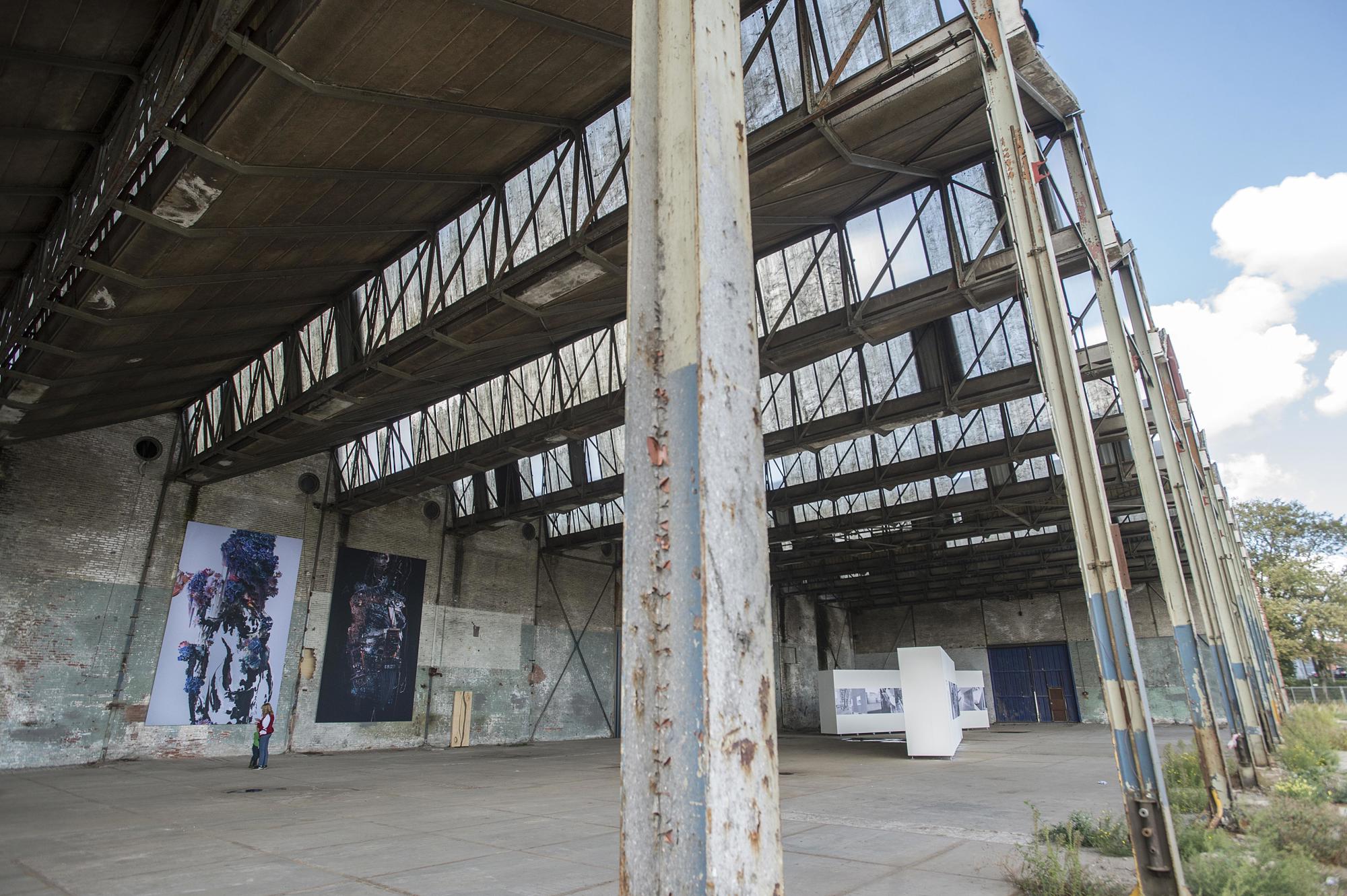
Students from the eight European academies started working on the theme for this eighth edition of the festival ('To Infinity and Beyond') as far back as September 2017 and received feedback on their projects and ideas from the curators of BredaPhoto as the opening date drew nearer. In April 2018, 50 of them were invited to a pitch presentation at LUCA School of Arts in Brussels. An inspiring experience, according to Tina Farifteh. ‘Presenting your work and talking about it, hearing how other people approach this theme, constantly putting yourself in the shoes of people who know nothing about your subject: you learn a lot from the whole experience’, she says. The curators finally selected the work of 15 students for the festival.
Tina points out that the work of talented young photographers is included as an integral part of the festival, rather than a separate add-on. ‘That is very special’, she says. ‘BredaPhoto Festival mixes the photo collections and video installations of top photographers and students together in its presentation. Visitors are free to make up their own minds.’
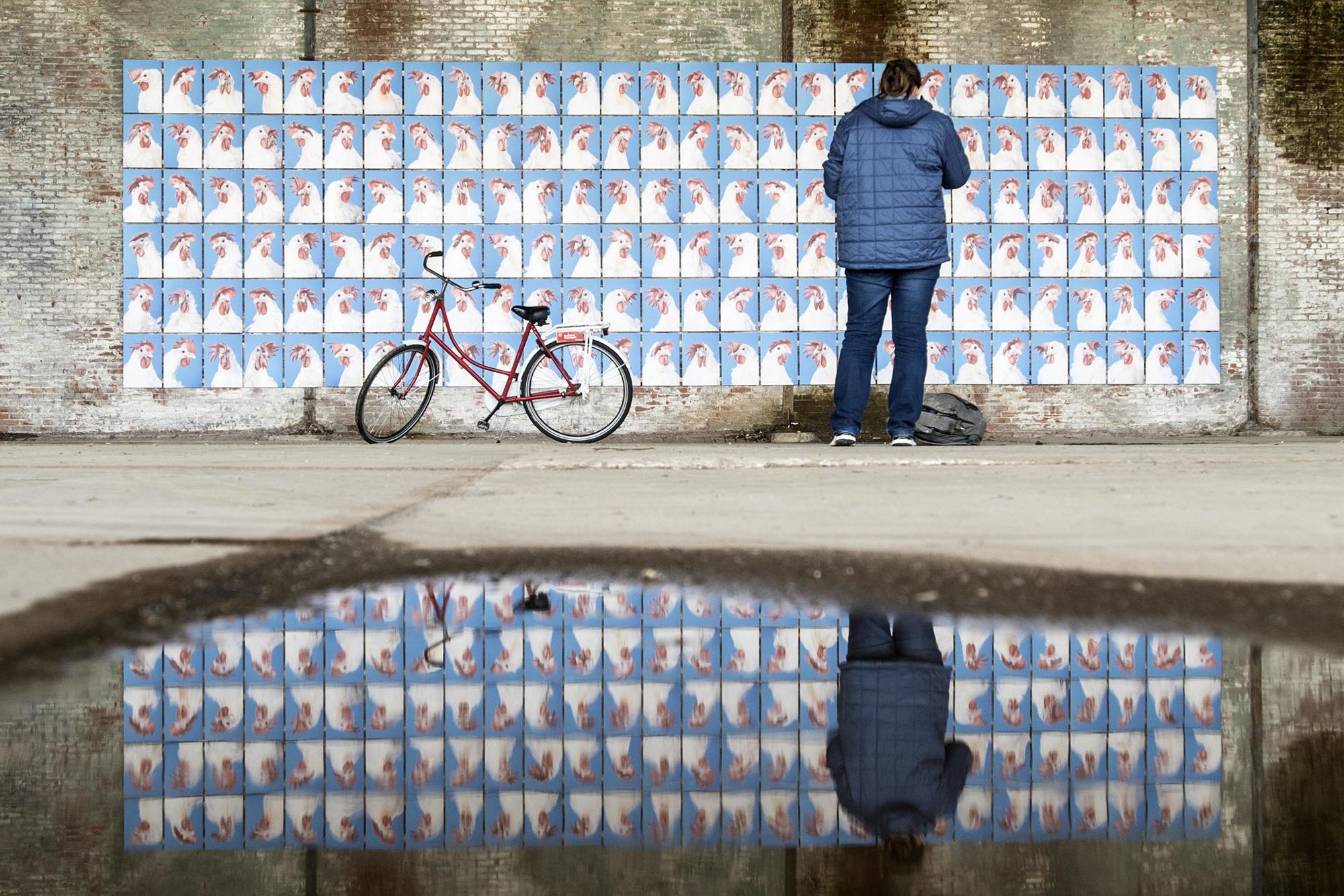
You can copy the full text of this story for free at the touch of a button